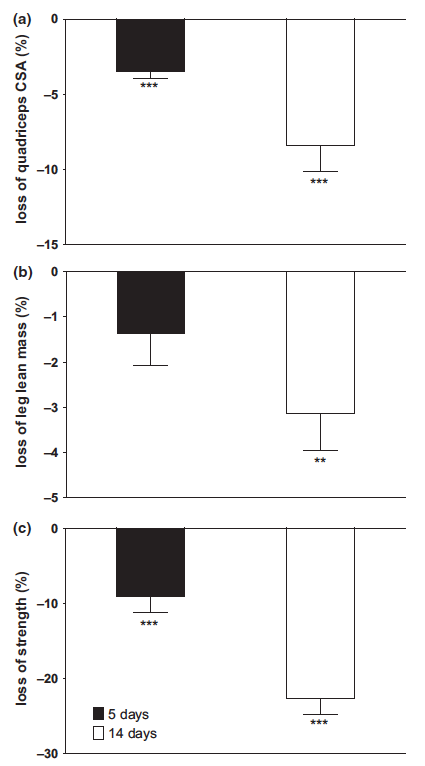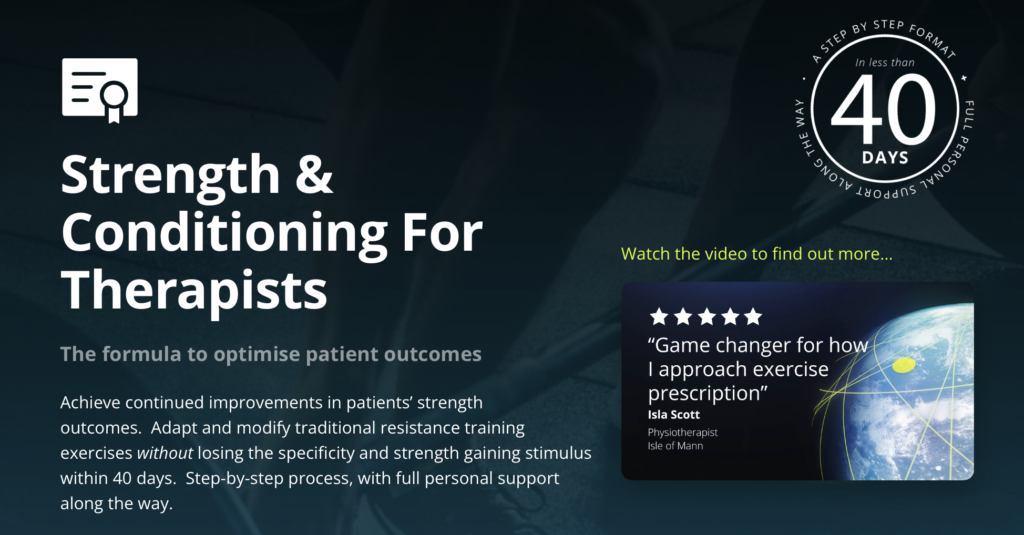Welcome to post 37 of Strength and Conditioning or Therapists. I hope you’re having a good week. Today we’re going to focus on muscle hypertrophy in rehabilitation. I’ve received quite a few questions about this topic, like how to optimise gains, what to do with patients, whether or not it’s important in patient populations, so in this post we’re going to clarify what we’re talking about: what is hypertrophy and what makes it happen and also explore the patient-focussed application. Next week we’ll look at training and rehab interventions to optimise hypertrophic gains.
Strength Training, Body Building & Hypertrophy
Okay, the terms hypertrophy and body building are often used interchangeably within the ‘BroScience’ arena, which isn’t necessarily very helpful when your patient Googles what they’ve heard! Also and whilst we’re at it, strength training and body building are not the same. Yes, I’m sure you know this, but it’s often confused. We’ve covered strength training in a lot of detail previously in the Strength and Conditioning or Therapists series: what it is, how to optimise gains and how to apply it to rehab and if you’d like to read more see the post catalogue here (from March 2019).
The aim of strength training is to optimise the maximal force production capabilities of muscle, the aim of body building is to optimise the development of muscle size. Whilst body building isn’t necessarily a principal aim in rehabilitation, trying to reverse or limit muscle atrophy through resistance exercise might well be. Such would require a specific muscle hypertrophy in rehabilitation intervention.
What is Hypertrophy?
A really nice, simple quote here:
Skeletal muscle hypertrophy is defined as an increase in muscle mass, which in the adult animal comes as a result of an increase in the size, as opposed to the number, of pre-existing skeletal muscle fibres.
Glass (2005)
Muscle Hypertrophy in Rehabilitation; Combatting Muscle Atrophy..?
Following injury, surgery or disuse there can be significant losses in muscle strength and likewise losses in muscle size (muscle atrophy) can also be substantive. If you’ve ever been injured or had a limb casted or immobilised you might have even seen it happen; it can occur remarkably quickly!
Wall et al. (2014) conducted a great study that exemplifies this. They casted and thus immobilised a single lower limb of health male participants and measured the strength and quadriceps cross-sectional area (CSA) after its removal. After only 5 days of immobilisation CSA decreased by 3.5%; after 14 days CSA had decreased by to 8.4%.

Wall et al (2014). Mean ( SEM) percentage loss of quadriceps cross sectional area (CSA; a), lean leg mass (b) and single-leg 1 repetition maximum strength (1-RM; c) following either 5 (n = 12) or 14 days (n = 12) of one-legged knee immobilization in healthy, young men.
Interestingly, and despite the fact that morphological changes take longer to achieve than muscle strength gains, the converse might be true during detraining, that is to say that losses to muscle CSA might happen more quickly compared to strength.
A very respected professor in neuromuscular physiology – Prof Kubo and his colleagues (2010) conducted a training and detraining study and measured the time-course of adaptation of neural and morphological parameters alongside strength changes over 3-months. After 3-moths of isometric training (4x/wk, 70% MVC x 10 reps) muscle strength increased by 41%; muscle CSA increased by 5.5% (the strength increases were, predictably, explained by neural drive and activation). Training then ceased and measures were continued. After only 1-month of detraining all of the gains in CSA were lost, yet there were no significant changes in maximal muscle strength.
So there’s the empirical evidence to back up your observations! Also an interesting point to note for for future … just to prod your thoughts, think about older people, sarcopenia and effects of resistance training (something we’ll cover at a later date).
Relationship Between Muscle Size & Muscle Strength
So, what do we think about muscle CSA being a predictor of strength? Yes, there is a relationship between muscle size and strength, however, it’s not that simple. A larger muscle CSA has a greater force generation capacity, but muscle strength performance is more complex than can be explained by CSA alone. Accordingly the relationship can vary by sex, training, methods used, training history and age, to name just a few variables (Jones et al. 2012). This is why you need specificity in your rehab and conditioning interventions – just because the musculature gets larger, it doesn’t mean that strength adaptations are optimised, and vice versa.

What Causes Muscle Hypertrophy?
Very simply put, muscle protein synthesis (MPS). Actually, skeletal muscle mass can increase when MPS exceeds muscle protein breakdown (MPB). Resistance exercise, or should I say repeated episodes of resistance exercise are a potent stimulator of MPS. Now if we want to optimise muscle hypertrophy in rehabilitation, we need to prescribe the right dose and intensity of resistance training (the training specificity), think about fuel ingestion (protein and timing of protein intake) and perhaps even consider the resistance training history of our patients.
But that’s all for next time. Next time – interventions to optimise hypertrophic changes and when should we address hypertrophy in the rehabilitation process?
ONLINE COURSE
Want to delve deeper into S&C and how to apply this to rehab? Check out the online course below. Popular across the globe with therapists and rehabilitation professionals,

References
- Glass (2005). Int J Biochem Cell Biol, 37(10):1974-84.
- Wall et al. (2014) Acta Physiol, 210, 600–611
- Kubo et al. (2010). J Strength Cond Res.24(2):322-31
- Jones et al. (2008). Sports Med 38: 987–994

